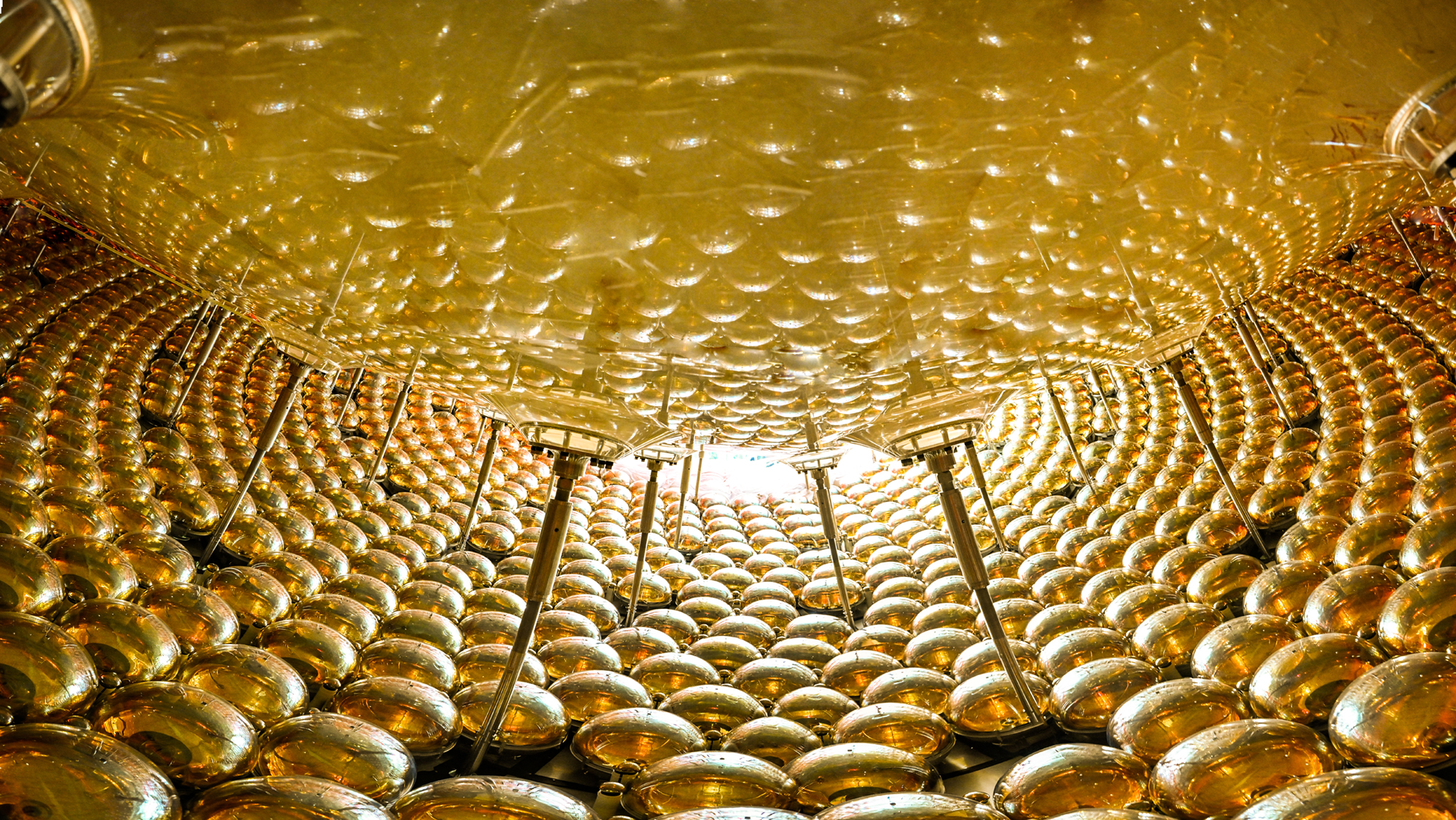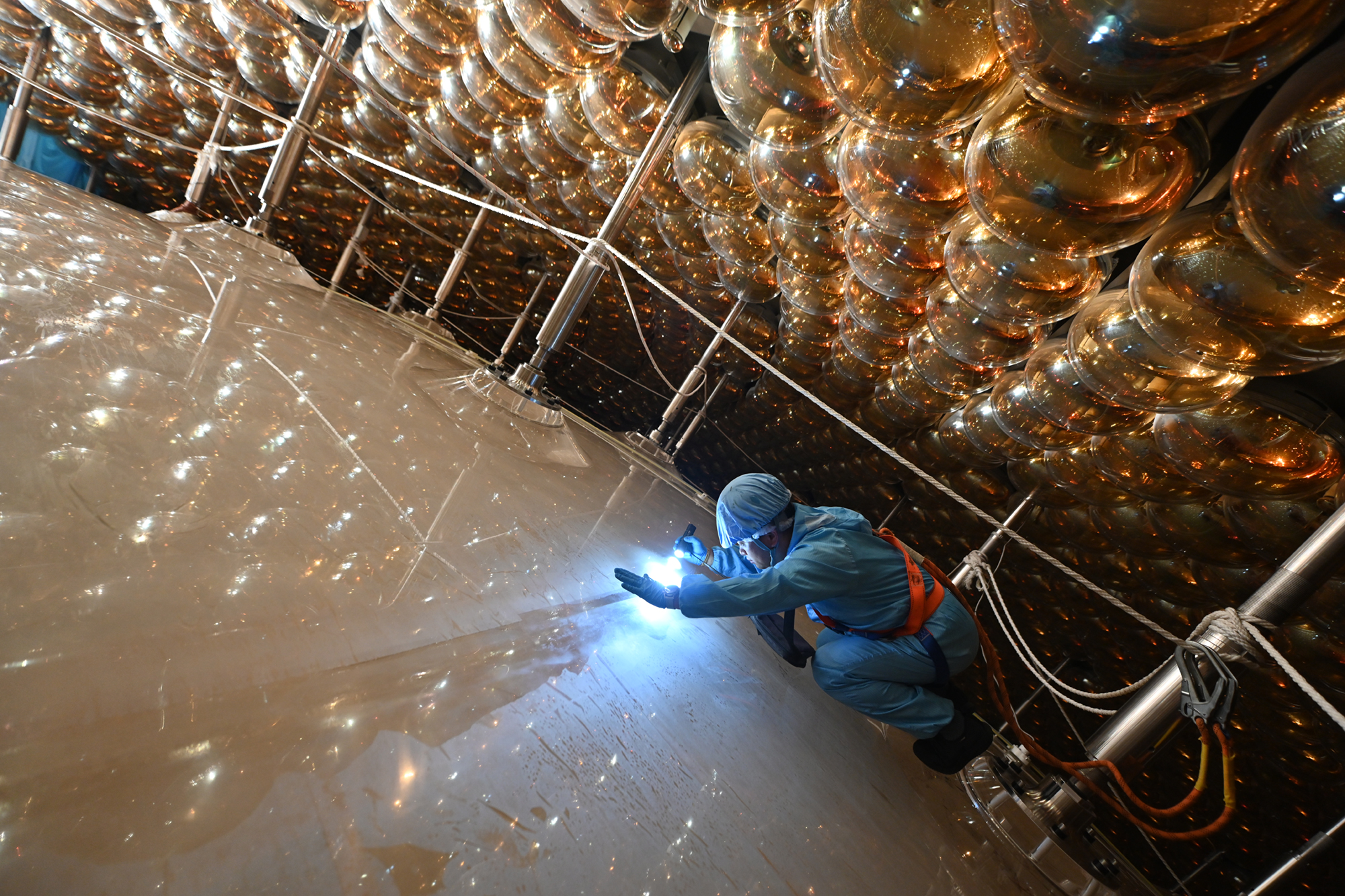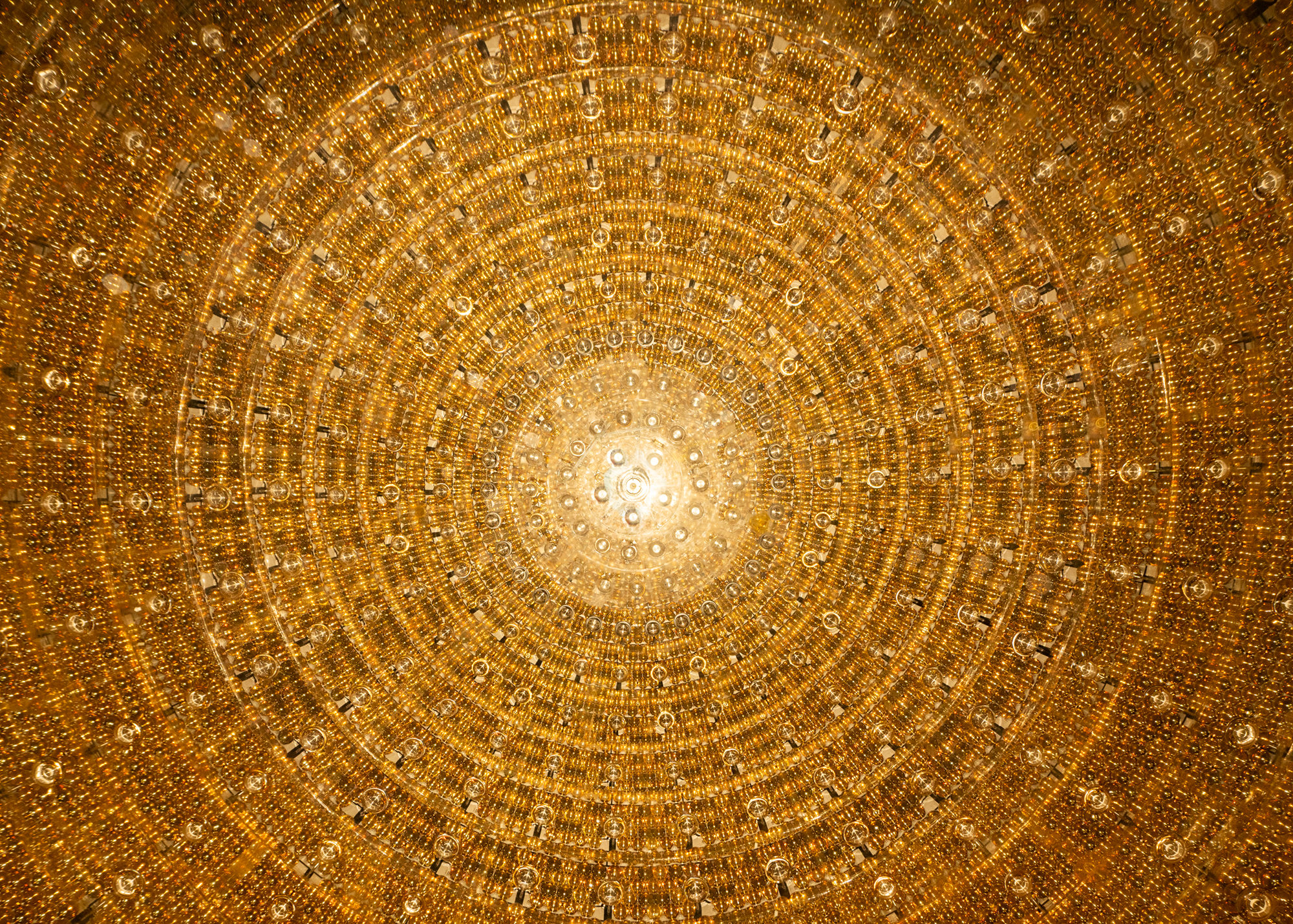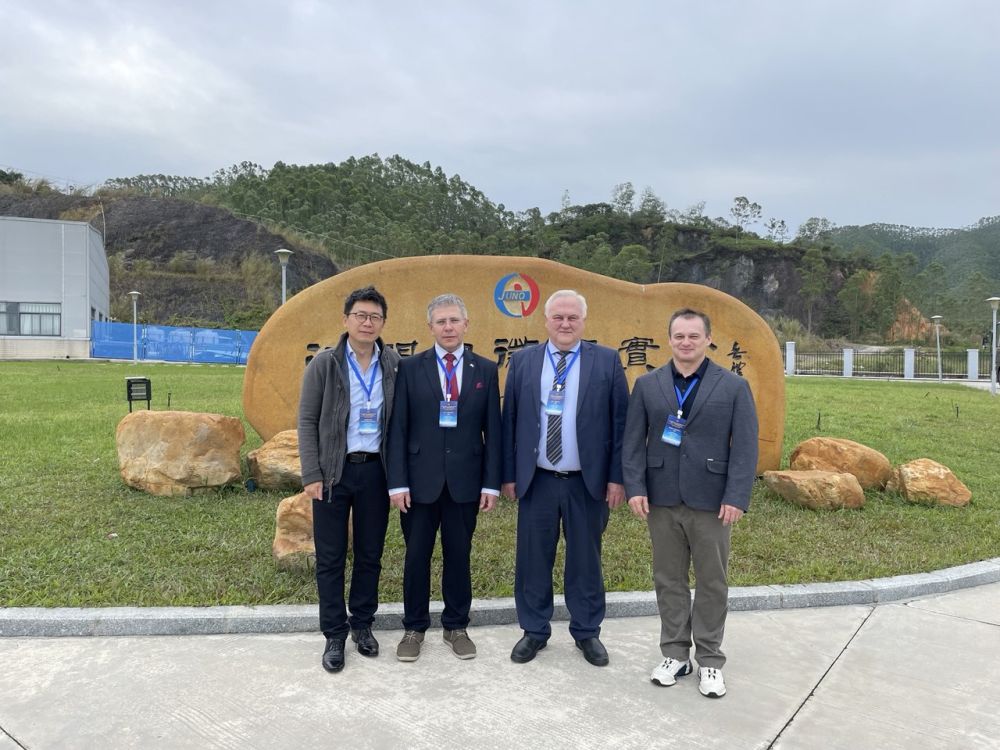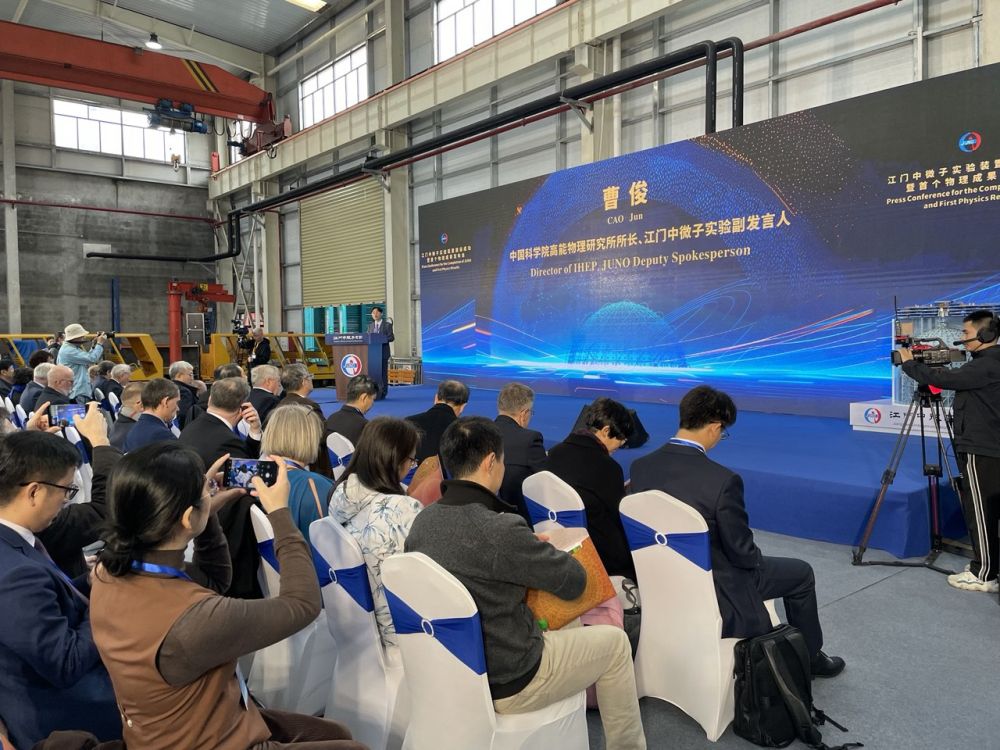JUNO Experiment: first physics results obtained
News, 19 November 2025
Several months after data taking began, the international JUNO Collaboration, including employees of the Joint Institute for Nuclear Research, presented first physics results. The detector’s key performance indicators fully meet or exceed design expectations, confirming its readiness for cutting-edge neutrino physics studies. A detailed article describing the detector performance was submitted to Chinese Physics C and posted on the arXiv preprint server.
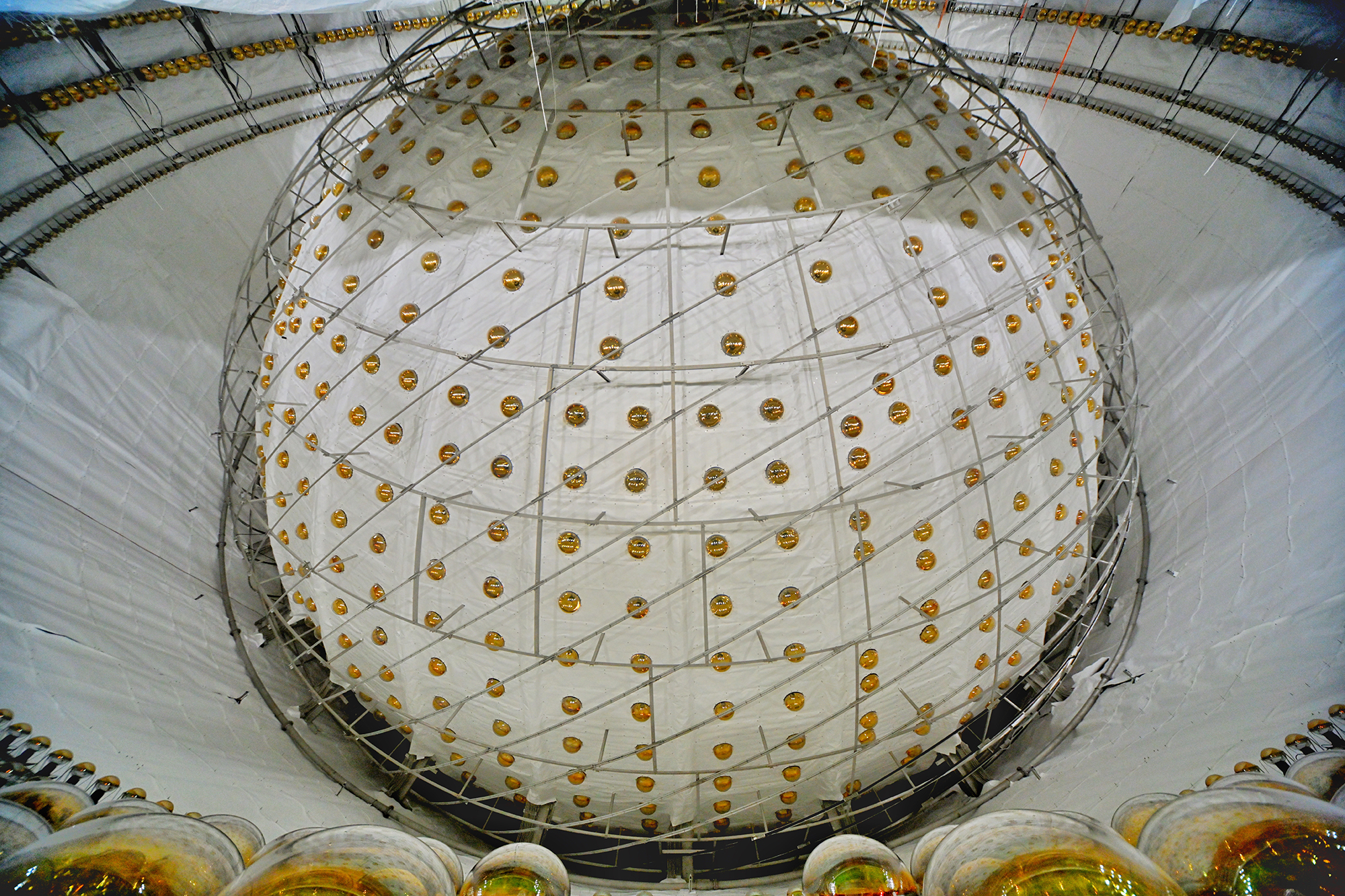 JUNO’s central detector before being filled up. The picture shows part of the outward-facing photomultipliers and the Earth’s magnetic field compensation coils. Photo: Yuexiang Liu
JUNO’s central detector before being filled up. The picture shows part of the outward-facing photomultipliers and the Earth’s magnetic field compensation coils. Photo: Yuexiang Liu
The results were officially presented at a press conference held by the Institute of High Energy Physics (IHEP) of the Chinese Academy of Sciences in Jiangmen City on 19 November 2025. At the event, the successful completion of the Jiangmen Underground Neutrino Observatory (JUNO) and the release of its first physics results were announced. After more than a decade of design, construction, and international cooperation, JUNO became the world’s first next-generation, large-scale, high-precision neutrino detector to begin operation.
JUNO is a major international collaboration led by IHEP. The project involves more than 700 scientists from 74 institutions across 17 countries and regions of the world. The JINR research team at JUNO includes specialists from the Laboratory of Nuclear Problems, the Laboratory of High Energy Physics, the Laboratory of Information Technologies, and the Laboratory of Theoretical Physics.
According to Physics Analysis Coordinator of the JUNO Collaboration Liangjian Wen, the first scientific results were obtained using data collected between 26 August and 2 November 2025. In this short time period, the experiment already measured the fundamental parameters of θ12 and Δm221, so-called solar neutrino oscillation parameters, with a factor of 1.6 better precision than all previous experiments combined.
The θ₁₂ and Δm²₂₁ parameters, originally determined using solar neutrinos, can also be precisely measured by reactor antineutrinos. Results from the two approaches show a mild 1.5-sigma discrepancy, hinting at possible new physics. The JUNO measurement confirmed this difference, and its future studies may prove or disprove its existence thanks to the facility’s unique feature, sensitivity to both solar and reactor neutrinos. A paper detailing the findings was posted on the arXiv preprint server on 18 November.
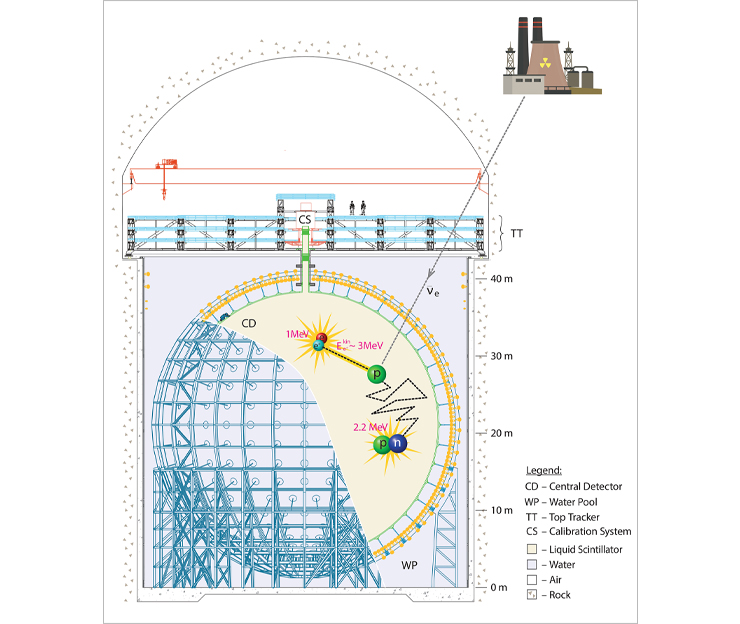 Scheme of the experiment. Image: JUNO Collaboration
Scheme of the experiment. Image: JUNO Collaboration
JUNO project manager and spokesperson Yifang Wang highlighted the experimental facility’s high efficiency: “Achieving such precision within only two months of operation shows that JUNO is performing exactly as designed. Precise measurement of neutrino energy by the JUNO detector will soon help determine the neutrino mass ordering, test the three-flavour oscillation framework, and search for new physics beyond the Standard Model”.
“The scientific outcome announced today witnesses how fruitful the decade-long effort of the JUNO Collaboration has been to assemble a state-of-the-art detector, incorporating many cutting-edge technical solutions,” JUNO Deputy Spokesperson Gioacchino Ranucci (the University and INFN of Milano, Italy) noted. “The experiment will dominate the landscape of neutrino physics over the next years, providing results of exquisite precision. Many factors contributed to this success, among which the convergence of experience and expertise in creating liquid scintillator detectors and applyingrelated analysis techniques – brought together by groups from around the world – was surely pivotal”.
The implementation of such a large-scale project was possible thanks to long-term preparation and coordinated efforts of the international community. First proposed in 2008, the concept of JUNO received approval from the Chinese Academy of Sciences and the Guangdong Provincial Government 10 years later, followed by international contributions in 2014. The construction of the underground laboratory began in 2015, with detector installation lasting from 2021 to December 2024. After the detector was filled with ultrapure water and 20 kilotonnes of liquid scintillator, JUNO began physics data taking on 26 August 2025.
Years of dedicated R&D of the collaboration’s participants led to the creation of high-efficiency photomultipliers, precision calibration systems, and technologies for the creation of ultra-transparent liquid scintillator and building the facility from low-background materials. At the heart of JUNO is a 35.4-metre-diameter acrylic sphere holding 20 000 tonnes of liquid scintillator, viewed by more than 20 000 large and 25 000 small photomultipliers immersed in a 44-metre-deep water pool for shielding from muons.
With its unprecedented detection sensitivity, the facility opens up long-term research prospects for the collaboration. JUNO will enable scientists to determine the neutrino mass ordering, measure oscillation parameters with sub-percent precision, study solar, atmospheric, supernova, and geoneutrinos, and search for physics beyond the Standard Model. Designed for a scientific lifetime of about 30 years, JUNO can be upgraded into one of the world’s most sensitive detectors for neutrinoless double-beta decay, probing the absolute neutrino-mass scale and testing whether neutrinos are Majorana particles.
“Our team is proud to have contributed to the foundation of JUNO,” Head of the JINR Group in JUNO Dmitry Naumov noted. “Our experiment is a rare place where diverse scientific knowledge and experience from around the world converge into a single, coordinated effort. Over the ten years of preparing JUNO, a team of 50 physicists and engineers from the Joint Institute participated in planning, developing, and assembling the detector and electronics, creating and developing the computing centre (one of three in Europe), developing and using event selection and reconstruction algorithms, and conducting statistical analysis”.
As noted by Head of the DLNP JINR Reactor Neutrino Sector Max, Deputy Head of the JINR Group in JUNO Maxim Gonchar, intensive work on acquiring first results was a valuable experience for the international team. “The last two months have been particularly challenging. Joint work with dozens of colleagues across three different time zones, irregular working hours, and a lack of weekends have demonstrated what a collective force united by a common goal can achieve. The first JUNO results pave the way for discoveries that will shape neutrino physics for many years to come,” he summarised.
